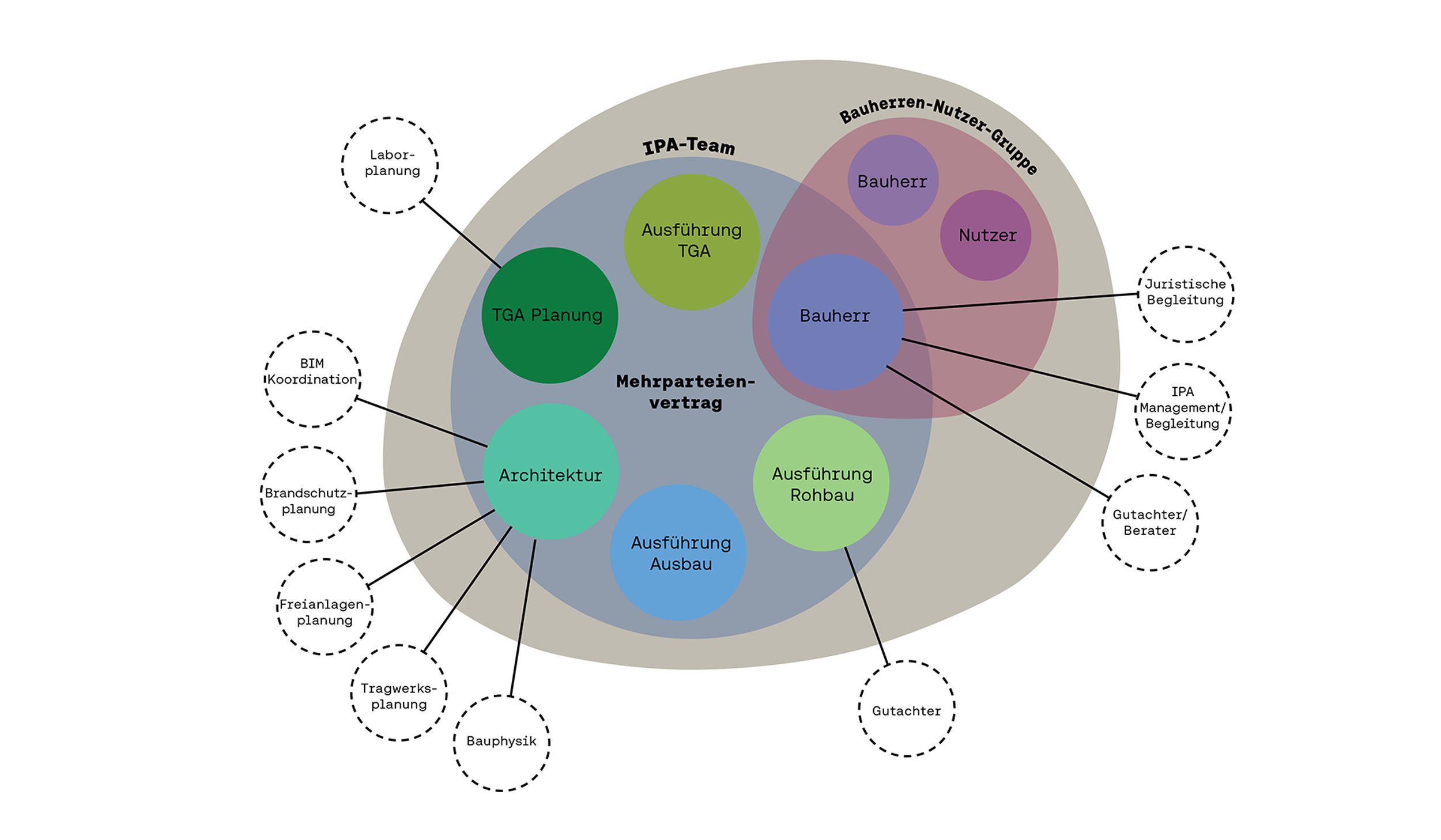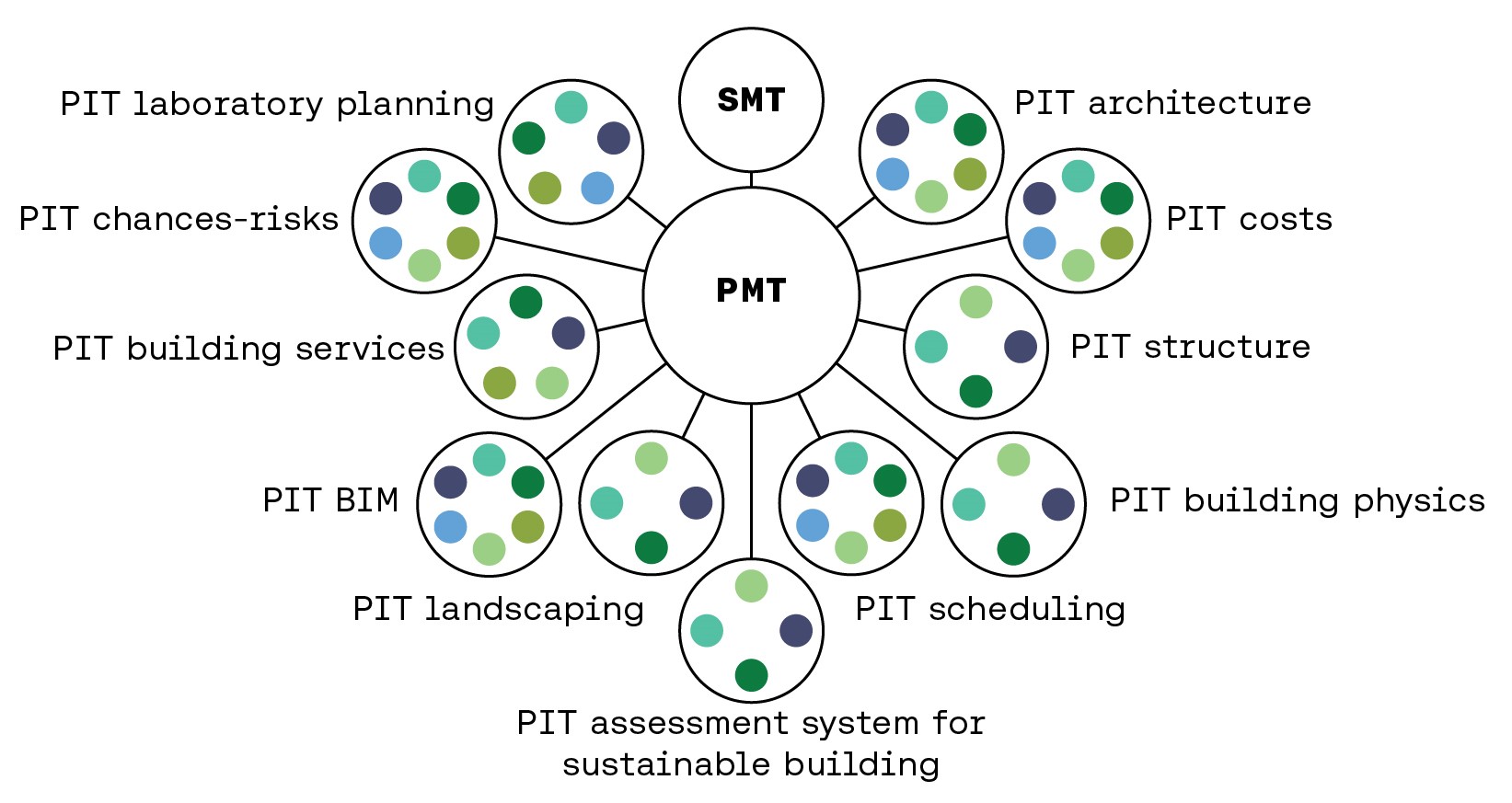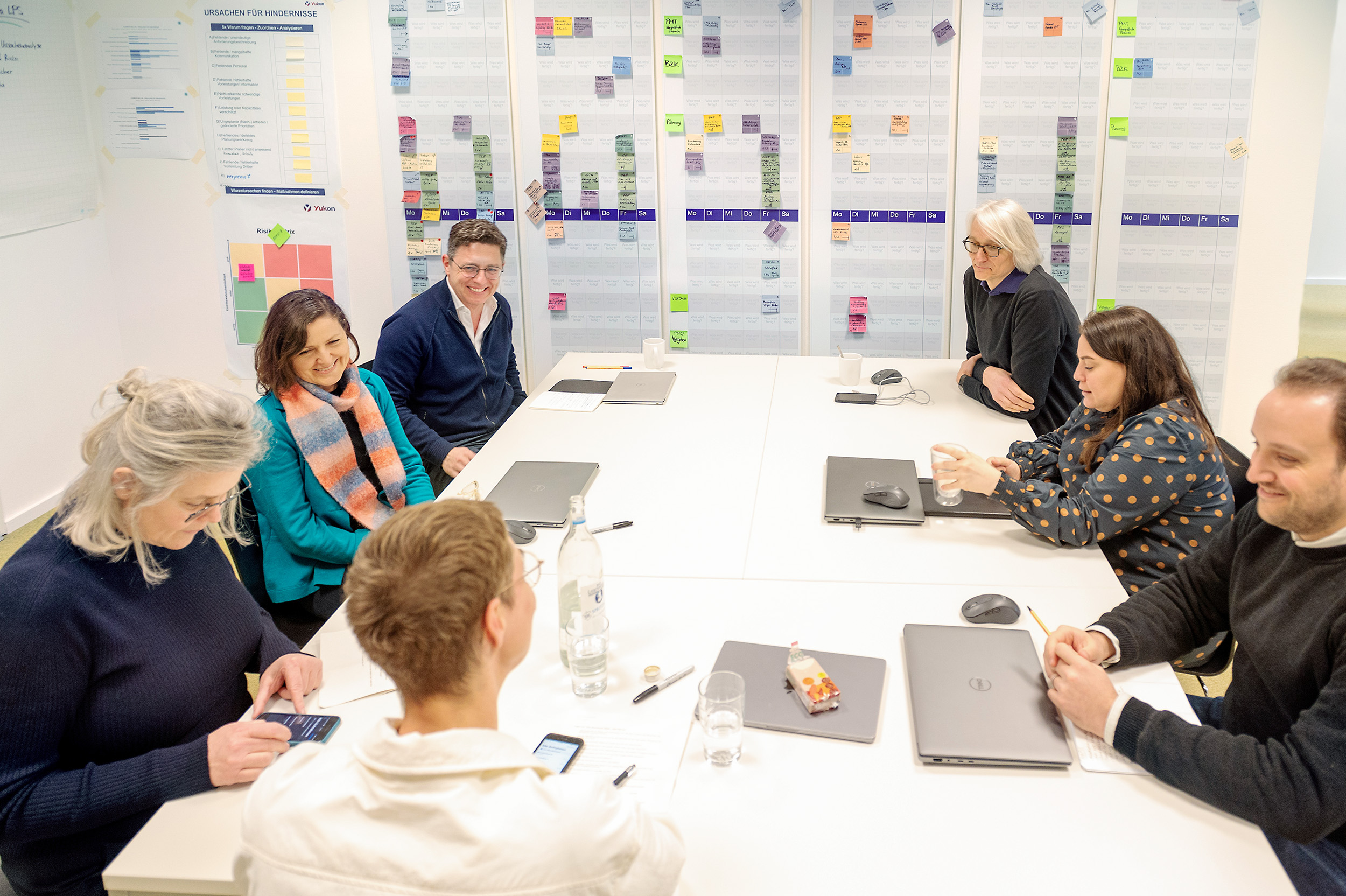News

IPD – Integrated Project Delivery
Burckhardt is one of still very few architectural offices in the German-speaking countries to work on a project using the integrated project delivery (IPD) method: the GBD 149 research and laboratory complex for the Federal Institute for Materials Research and Testing. The collaborative approach of IPD fundamentally reforms conventional project management across many levels, with the aim of realizing complex construction projects more successfully in terms of quality, deadlines, and costs.
In this interview, the members of our IPD team have told us about their experiences with the new method.
Project organization

IPD requires a collaborative mindset. Where does this attitude come from at Burckhardt?
Gunnar: We are a large office, and work in a very interdisciplinary way even amongst ourselves. We have specialists in topics such as agile methods and digital transformation, and knowledge transfer is an established practice in various think tanks and working groups across our different locations. We consider very precisely how we can best apply the available knowledge in our projects. That is an inherently collaborative process.
Tammam: Once you start working for Burckhardt, you soon notice that there is a very constructive exchange taking place between new members and those who have been here for twenty years plus.
Carsten: It’s also related to Burckhardt’s forward-looking approach and innovative spirit, which has been a defining feature of the company since its beginnings in the 1950s. And we have a lot of experience with ARGE and TU constellations. In my view, IPD is the logical continuation of a clear long-term trajectory.
What aspects of IPD were truly new to you?
Golnar: The level of transparency is considerably higher than in conventional projects. Nearly everything is shared at an early stage. This requires much more mutual trust.
Michaela: The intensity of collaboration at our shared colocation. In terms of TGA planning, for example, our small working groups – the PITs – work directly with the individual consultants for ventilation, plumbing and so on. That’s not an opportunity you normally get, and it works extremely well.

Senior Management Team (SMT)
Partners’ managing directors
Consensus decision-making
Directive authority of the client
Project Management Team (PMT)
Partners’ project managers
Operational project management
Consensus decision-making
Project Implementation Team (PIT)
Operational level, consists of members of the partners’ planning teams
Consensus decision-making
Construction delays, overrunning costs, and legal disputes are just some of the factors fueling the increasing popularity of IPD. Your project is currently in the validation phase. Based on your experience so far: How effectively does IPD prevent these issues?
Gunnar: In the validation phase, we assess whether our plans are feasible within the budget and schedule. The contracting companies are already involved at this stage, so we can spot discrepancies early on. On this basis, we consider our options and make very deliberate decisions. Unlike in a conventional planning process, we have a much more precise understanding of what will happen during later phases. That prevents unpleasant surprises.
Despite the consensus, conflicts of interest must arise occasionally. How are these solved in IPD?
Gunnar: When someone is not keen to support a decision, it’s imperative to find out why. This is something we do on a daily basis. It allows us to spot and resolve conflicts much sooner than would normally happen.
Michaela: Unlike in conventional projects, the contracting firms are involved, say, in the development of a façade, i.e., they are a part of the process. That makes it much easier when it comes to finalizing the decisions.
Golnar: Whenever we have planning disagreements in the PITs, we draft a decision document with various options and present it to the PMT. They then make a decision based on the conditions of satisfaction (COS), which all project participants accept from the outset.
Another IPD principle is called «best for project». Have there been situations in which someone from another discipline helped you solve a problem on your end?
Golnar: Yes, that has absolutely happened. And I’m constantly surprised how productive and harmonious everyone’s collaboration on this project has been.
Would you like to use the IPD method for other projects?
Everyone: Yes, definitely.
The IPD team from Burckhardt Berlin was on hand to answer questions:
Carsten Krafft, Golnar Isrusch, Gunnar Rekersdrees, Michaela Holzwarth, Tammam Agha
